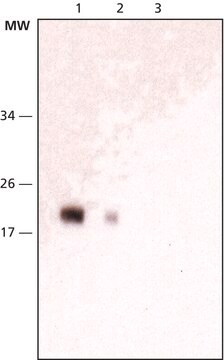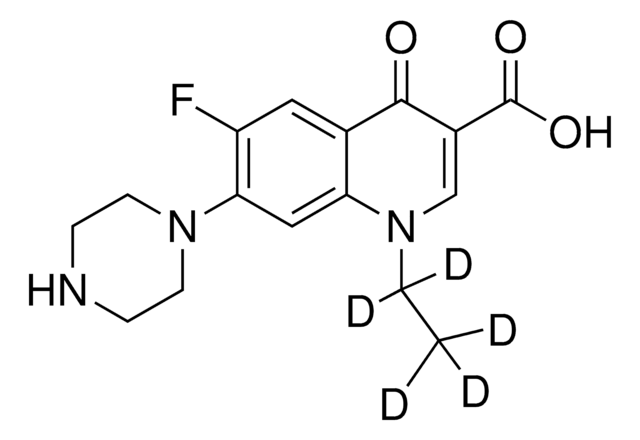Wichtige Dokumente
K0129
Kanamycin -Lösung aus Streptomyces kanamyceticus
liquid, suitable for cell culture and plant cell culture, BioReagent
About This Item
Empfohlene Produkte
product name
Kanamycin -Lösung aus Streptomyces kanamyceticus, 10 mg/mL in 0.9% NaCl, 0.1 μm filtered, BioReagent, suitable for cell culture
Biologische Quelle
Streptomyces kanamyceticus
Qualitätsniveau
Sterilität
0.1 μm filtered
Produktlinie
BioReagent
Form
liquid
Konzentration
10 mg/mL in 0.9% NaCl
Methode(n)
cell culture | mammalian: suitable
cell culture | plant: suitable
Verunreinigungen
endotoxin, tested
Wirkungsspektrum von Antibiotika
Gram-negative bacteria
Gram-positive bacteria
mycobacteria
mycoplasma
Wirkungsweise
protein synthesis | interferes
Lagertemp.
2-8°C
SMILES String
NC[C@H]1O[C@H](O[C@@H]2[C@@H](N)C[C@@H](N)[C@H](O[C@H]3O[C@H](CO)[C@@H](O)[C@H](N)[C@H]3O)[C@H]2O)[C@H](O)[C@@H](O)[C@@H]1O
InChI
1S/C18H36N4O11/c19-2-6-10(25)12(27)13(28)18(30-6)33-16-5(21)1-4(20)15(14(16)29)32-17-11(26)8(22)9(24)7(3-23)31-17/h4-18,23-29H,1-3,19-22H2/t4-,5+,6-,7-,8+,9-,10-,11-,12+,13-,14-,15+,16-,17-,18-/m1/s1
InChIKey
SBUJHOSQTJFQJX-NOAMYHISSA-N
Suchen Sie nach ähnlichen Produkten? Aufrufen Leitfaden zum Produktvergleich
Allgemeine Beschreibung
Anwendung
Biochem./physiol. Wirkung
Widerstandsmechanismus: Aminoglykosid-modifizierende Enzyme (einschließlich Acetyltransferase, Phosphotransferase, Nukleotidtransferase) können dieses Antibiotikum verändern und seine Wechselwirkung mit Ribsomen verhindern.
Antimikrobielles Spektrum: Kanamycinsulfat ist wirksam gegen gramnegative und grampositive Bakterien und Mycoplasma.
Vorsicht
Signalwort
Danger
H-Sätze
P-Sätze
Gefahreneinstufungen
Repr. 1B
Lagerklassenschlüssel
6.1C - Combustible acute toxic Cat.3 / toxic compounds or compounds which causing chronic effects
WGK
WGK 2
Flammpunkt (°F)
Not applicable
Flammpunkt (°C)
Not applicable
Analysenzertifikate (COA)
Suchen Sie nach Analysenzertifikate (COA), indem Sie die Lot-/Chargennummer des Produkts eingeben. Lot- und Chargennummern sind auf dem Produktetikett hinter den Wörtern ‘Lot’ oder ‘Batch’ (Lot oder Charge) zu finden.
Besitzen Sie dieses Produkt bereits?
In der Dokumentenbibliothek finden Sie die Dokumentation zu den Produkten, die Sie kürzlich erworben haben.
Kunden haben sich ebenfalls angesehen
Artikel
Antibiotic kill curve is a dose response experiment in which mammalian cells are subjected to increasing amounts of selection antibiotic
Unser Team von Wissenschaftlern verfügt über Erfahrung in allen Forschungsbereichen einschließlich Life Science, Materialwissenschaften, chemischer Synthese, Chromatographie, Analytik und vielen mehr..
Setzen Sie sich mit dem technischen Dienst in Verbindung.







